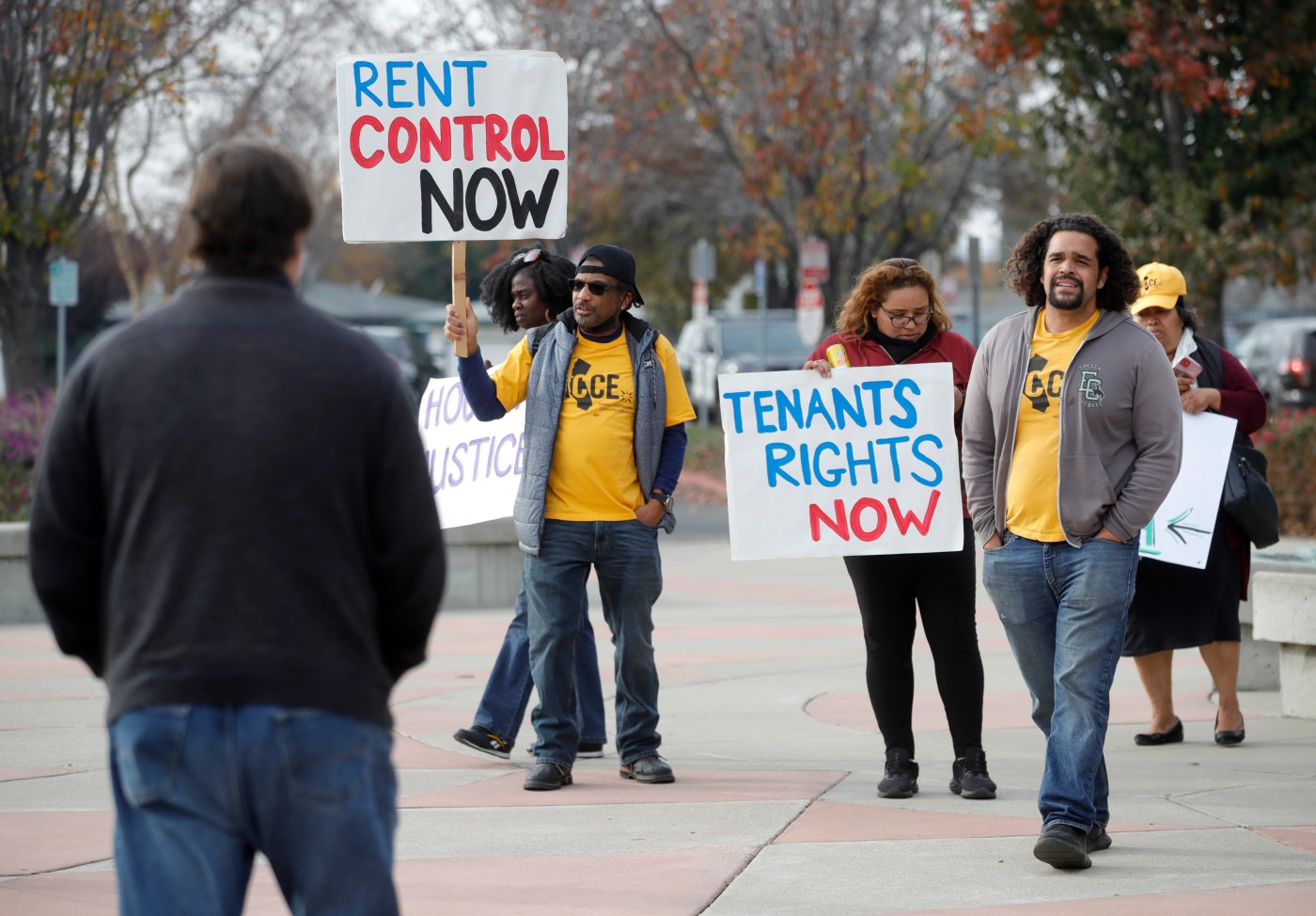Tenant advocates in San Pablo are one step closer to getting rent control on the ballot this November.
On Tuesday, advocates submitted to the city more than 1,500 signatures needed to bring a measure to cap rent increases and add renter protections before voters. Officials will now seek to verify the signatures.
In recent months, renter and landlord groups across the Bay Area have launched similar ballot-box campaigns, including competing measures to either expand or roll back tenant protections in Berkeley. In Concord, a landlord-backed effort is underway to repeal a newly approved rent control law.
In addition to San Pablo, tenant groups led by the influential Alliance of Californians for Community Empowerment are also coordinating signature gathering pushes in Redwood City, Pittsburg and Larkspur.
The rent control clashes follow unprecedented pandemic eviction moratoriums and rental assistance programs to prevent low-income tenants from losing their homes amid widespread job losses. With the emergency efforts now expired, tenant groups are going directly to voters in hopes of pushing through new permanent renter protections as many residents still struggle to afford the Bay Area’s astronomical housing costs.
The typical apartment rent in the region now tops $2,500 a month, compared to less than $1,400 nationwide, according to rental listing website Apartment List.
“As a San Pablo tenant for more than 25 years, I have found myself in the difficult situation of having to choose between paying my rent or buying food for my family, and that is not fair,” Veronica Martinez, a local social justice advocate, said in a statement.
But opponents of rent control argue that in addition to hurting small landlords still reeling from the pandemic, restricting rent increases creates a disincentive for developers to build more desperately needed housing. They also cite research showing that rent limits can reduce the number of available apartments and diminish overall affordability as tenants stay in rent-controlled units longer and some landlords stop leasing properties.
Related Articles
Too many cubicles, too few homes spur incentives to convert offices to housing
Are story poles a damper on home building? Los Gatos changes rules after warning
California housing developers win first ‘builders remedy’ battles in fight to bypass local zoning
Could the Supreme Court make it easier to clear homeless camps?
It’s not just skyscrapers and high-density — ‘builder’s remedy’ is also bringing more urban sprawl
The proposed ballot measures in San Pablo, Redwood City, Pittsburg and Larksupr would cap yearly rent increases to 60% of the inflation rate and no more than 3% or 5% in total, depending on the city. They would also beef up enforcement of existing renter protections and include rules against tenant harassment.
The rent caps would not apply to single-family homes and condos, and apartments built after 1995 would also be exempt. Landlords would still be able to charge market-rate rent to new tenants, and in some cases, property owners could petition for increases beyond the local limits.
Across California, a state law enacted in 2020 caps rent increases for older apartments at 5% plus inflation, or 10%, whichever is lower. More than 20 cities statewide also have local rent control laws on the books, including Oakland, Richmond, San Jose, Mountain View, East Palo Alto and San Francisco.












